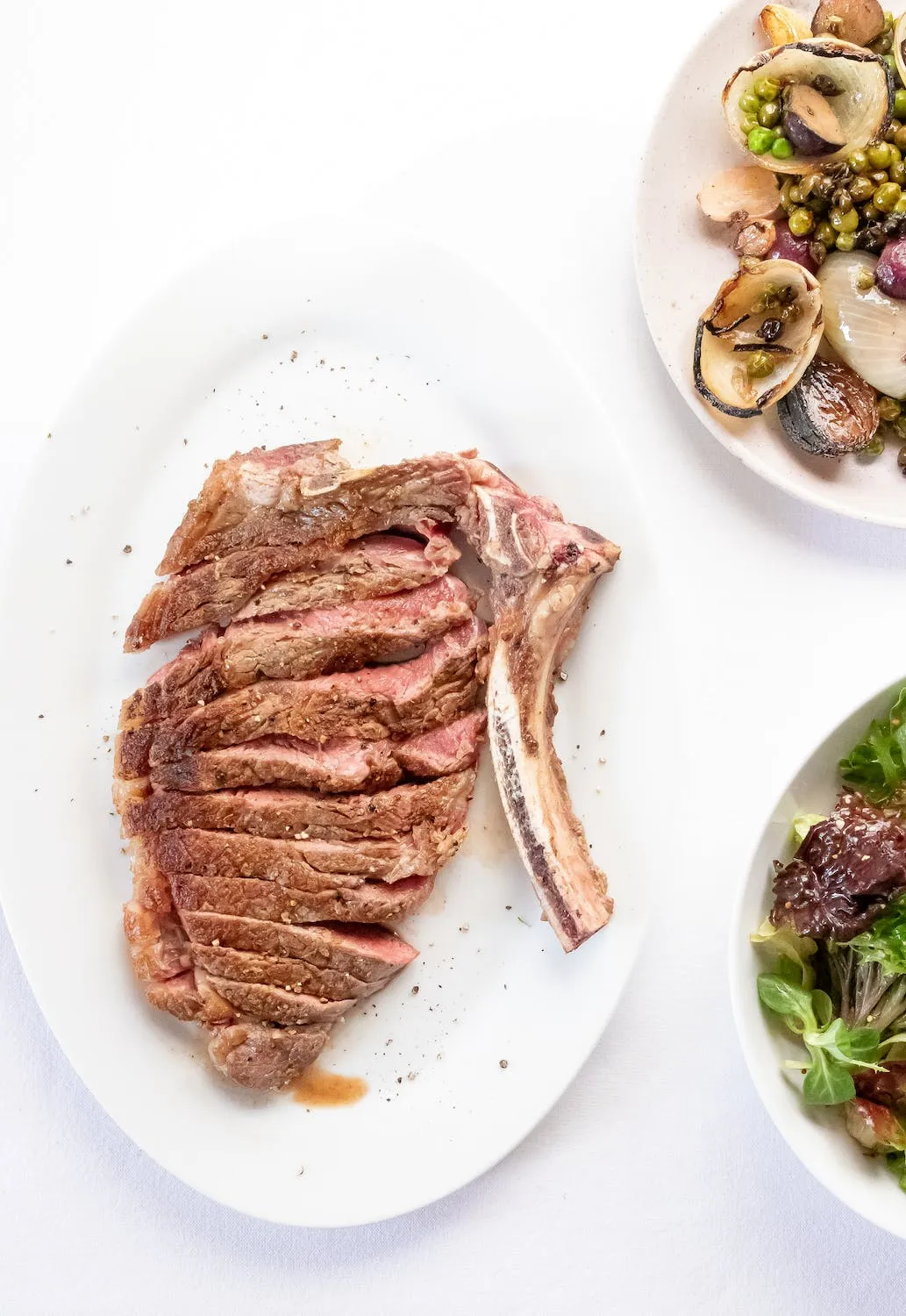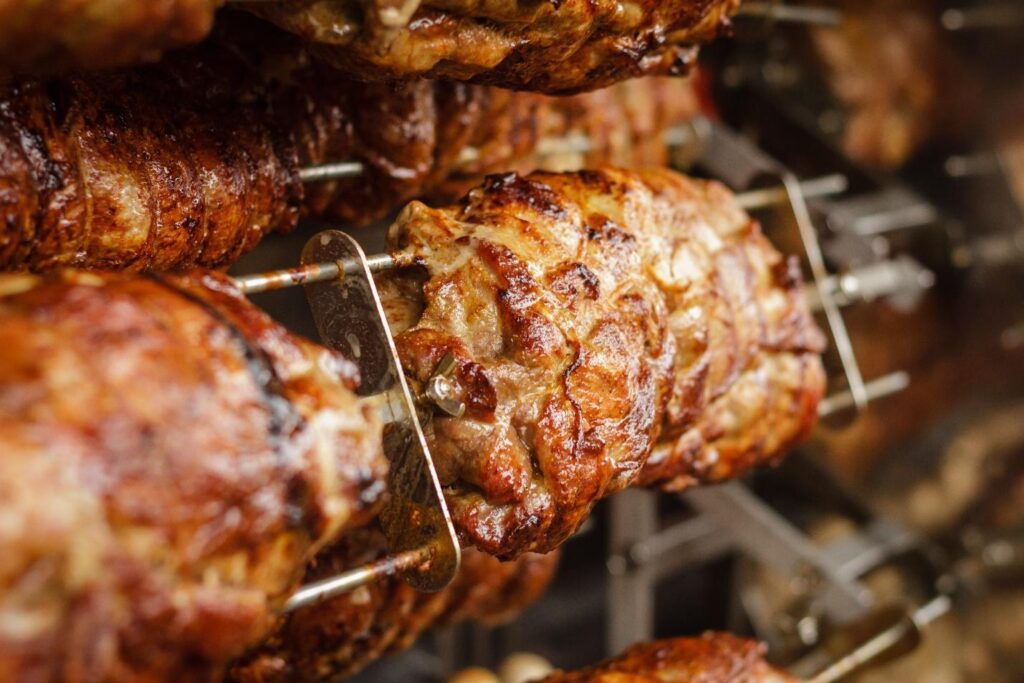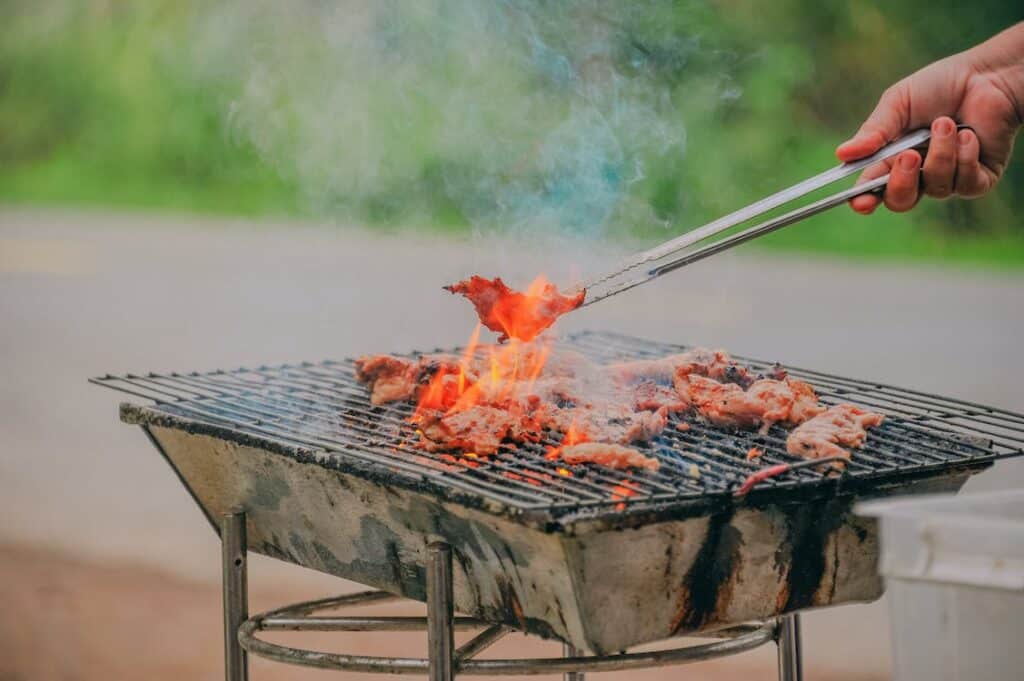
Are you a steak lover who can’t decide between a porterhouse and a ribeye? Look no further! This article will help you make an informed choice between these two mouthwatering cuts of beef. Whether you’re grilling at home or dining out, understanding the differences between porterhouse and ribeye steaks will ensure a truly satisfying culinary experience. So, let’s dive in and explore the unique qualities of each cut, so you can confidently order your next steak with confidence.
When it comes to steak, the porterhouse and ribeye are often considered the cream of the crop. Both cuts are known for their exceptional flavor and tenderness, but they do have some key differences. The porterhouse steak is a larger cut that includes both the tenderloin and the strip steak, giving you the best of both worlds. On the other hand, the ribeye is known for its rich marbling and intense beefy flavor. Understanding these distinctions will help you choose the perfect steak for your next indulgent meal.
What is a Porterhouse Steak?
When it comes to grilling a delicious steak, it’s important to understand the different cuts of beef and their unique qualities. One popular choice that often gets the taste buds tingling is the porterhouse steak. So, what exactly is a porterhouse steak?
A porterhouse steak is a thick and juicy cut of beef that comes from the rear end of the short loin. It’s similar to a T-bone steak, but the main difference lies in the size of the tenderloin portion. A porterhouse steak is larger and includes both the tenderloin and the strip steak, giving you the best of both worlds.
The tenderloin, also known as the filet, is one of the most tender and sought-after cuts of beef. It’s lean, buttery, and incredibly flavorful. On the other side of the bone, you have the strip steak, which is known for its rich marbling and intense beefy flavor.
When grilling a porterhouse steak, the combination of the tenderloin and strip steak creates a mouthwatering experience. The tenderloin provides a melt-in-your-mouth tenderness, while the strip steak offers a robust and savory taste.
To cook a porterhouse steak to perfection, you’ll want to follow a few key steps. Firstly, make sure to season the steak generously with salt and pepper to enhance its natural flavors. Then, preheat your grill to high heat to achieve a beautiful sear on the outside while keeping the inside juicy and tender.
Place the porterhouse steak on the grill and let it cook for a few minutes on each side, depending on your desired level of doneness. Remember to use a meat thermometer to ensure it reaches your preferred internal temperature. For a medium-rare steak, aim for an internal temperature of 135°F (57°C).
Once your porterhouse steak is done, take it off the grill and let it rest for a few minutes before slicing into it. This allows the juices to redistribute, resulting in a more tender and flavorful steak.
What is a Ribeye Steak?
Now that we’ve covered the porterhouse steak, let’s dive into another mouthwatering cut of beef: the ribeye steak. As a grill master, it’s important to understand the characteristics and flavor profile of different cuts to impress your guests at the next barbecue.
The ribeye steak is known for its exceptional marbling, which gives it a rich and intense flavor. This marbling, or the streaks of fat throughout the meat, not only adds flavor but also keeps the steak tender and juicy during cooking. When properly cooked, a ribeye steak is a carnivorous delight that will have your taste buds singing.
One of the key features of a ribeye steak is its boneless nature. While some cuts, like the T-bone or porterhouse, have a bone running through the middle, the ribeye is all about that meaty goodness. This makes it easier to handle and cook evenly on the grill.
When shopping for a ribeye steak, look for one with visible marbling and a bright red color. The fat should be evenly distributed throughout the meat, ensuring a juicy and flavorful bite every time. Remember, a little fat is a good thing when it comes to a ribeye steak!
To bring out the best flavors in a ribeye steak, keep the seasoning simple. A sprinkle of salt and freshly ground black pepper will enhance the natural flavors of the meat without overpowering it. Remember, the star of the show here is the beef itself, so let it shine.
Now that you know what a ribeye steak is all about, it’s time to fire up the grill and get cooking. Experiment with different cooking techniques, such as direct grilling or reverse searing, to find your preferred method for achieving that perfect medium-rare or medium doneness. And don’t forget to let the steak rest for a few minutes before slicing into it. This allows the juices to redistribute, resulting in a tender and juicy steak.
So, whether you’re a seasoned grill master or a beginner barbecue enthusiast, the ribeye steak is a cut worth exploring. Its marbling, intense flavor, and boneless nature make it a crowd-pleaser every time. Get ready to impress your guests with a perfectly grilled ribeye steak that will leave them coming back for more.
Differences in Cut
When it comes to choosing the perfect steak, understanding the differences in cut is key. As a grill master, it’s important to teach beginner BBQ enthusiasts the nuances of each cut, so they can elevate their grilling game. Let’s dive into the differences between porterhouse and ribeye steak.
Porterhouse Steak
The porterhouse steak is a true carnivorous delight. It’s a thick and juicy cut that includes both the tenderloin and the strip steak. This means you get the best of both worlds – the tenderness of the tenderloin and the rich flavor of the strip steak. The porterhouse steak is often considered the king of steaks due to its impressive size and combination of two high-quality cuts.

« Choosing the Best Wood Pellets to Enhance Your Smoking Experience
Master the Grill: Tips for Roasting and Baking with Delicious Recipes »
When grilling a porterhouse steak, it’s important to season it generously with salt and pepper to enhance its natural flavors. Preheat your grill to medium-high heat and sear the steak for a few minutes on each side. To ensure the perfect level of doneness, use a meat thermometer. For medium-rare, cook until the internal temperature reaches 135°F (57°C). Remember, it’s crucial to let the steak rest for a few minutes before slicing into it. This allows the juices to redistribute, resulting in a tender and flavorful bite.
Ribeye Steak
The ribeye steak is known for its exceptional marbling, which gives it a rich and intense flavor. It’s boneless, making it easy to cook and serve. When selecting a good ribeye steak, look for one with abundant marbling throughout the meat. This fat content is what gives the ribeye its delicious flavor and tenderness.
To bring out the best in a ribeye steak, keep the seasoning simple. A sprinkle of salt and pepper is all you need to let the natural flavors of the meat shine. When grilling, start with high heat to sear the steak and then reduce the heat to medium. This will ensure a juicy and perfectly cooked ribeye. And of course, don’t forget to let the steak rest before slicing into it. This will allow the juices to redistribute and result in a melt-in-your-mouth experience.
By understanding the differences between porterhouse and ribeye steak cuts, you can confidently choose the perfect cut for your grilling adventures. Whether you prefer the combination of tenderloin and strip steak in a porterhouse or the rich marbling and intense flavor of a ribeye
Differences in Flavor and Texture
When it comes to steak, flavor and texture are two essential factors that can make or break your dining experience. Understanding the differences between porterhouse and ribeye steaks in terms of flavor and texture will help you choose the perfect cut for your next grilling session.
Porterhouse Steak: This cut is often regarded as the king of steaks due to its incredible flavor and mouthwatering texture. The porterhouse steak includes both the tenderloin and the strip steak, giving you the best of both worlds. The tenderloin section offers a delicate and buttery texture, while the strip steak section provides a robust and meaty flavor. The combination of these two cuts results in a steak that is both tender and flavorful.
Ribeye Steak: On the other hand, the ribeye steak is known for its exceptional marbling, which translates into intense flavor and juiciness. The marbling, or the streaks of fat running through the meat, adds a rich and buttery taste to the steak. The high fat content also contributes to a melt-in-your-mouth texture that is truly indulgent.
When it comes to cooking these steaks, the differences in flavor and texture should be taken into consideration. For porterhouse steaks, it’s important to season them simply with salt and pepper to let the natural flavors shine through. The thick and juicy nature of the porterhouse requires a slightly longer grilling time to achieve the desired level of doneness. Use a meat thermometer to ensure that you cook it to perfection.
As for ribeye steaks, the intense marbling means that you don’t need to be heavy-handed with the seasoning. A simple sprinkle of salt and pepper will do the trick. The high fat content means that ribeye steaks cook relatively quickly, so keep an eye on them to avoid overcooking.
Remember, whether you choose a porterhouse or ribeye steak, always let the steak rest for a few minutes after grilling. This allows the juices to redistribute and ensures a tender and flavorful result.

Cooking Techniques for Porterhouse and Ribeye
As a grill master, I’m here to help you elevate your grilling game and unlock the full potential of porterhouse and ribeye steaks. With these cooking techniques, you’ll be able to impress your friends and family with perfectly cooked, juicy, and flavorful steaks every time.
Seasoning
When it comes to seasoning, simplicity is key. For both porterhouse and ribeye steaks, a generous sprinkle of kosher salt and freshly ground black pepper is all you need to enhance the natural flavors of the meat. Let the steaks sit at room temperature for about 30 minutes after seasoning to allow the flavors to penetrate the meat.
Preheating the Grill
To achieve that beautiful sear and caramelization on the outside of your steaks, preheating the grill is crucial. For porterhouse and ribeye steaks, you’ll want to preheat your grill to high heat, around 450-500°F. This high heat will help create a mouthwatering crust while keeping the inside tender and juicy.
Grilling Times
Cooking times for porterhouse and ribeye steaks will vary depending on the thickness of the cut and your desired level of doneness. As a general guideline:
- For a medium-rare porterhouse steak, grill for about 4-5 minutes per side.
- For a medium-rare ribeye steak, grill for about 3-4 minutes per side.
Remember to use a meat thermometer to ensure the steaks reach your preferred internal temperature: 135°F for medium-rare, 145°F for medium, and 160°F for well-done.
Resting
One of the most crucial steps in cooking a perfect steak is allowing it to rest after grilling. This allows the juices to redistribute throughout the meat, resulting in a more tender and flavorful steak. Let your porterhouse or ribeye steak rest for about 5-10 minutes before slicing into it.
Conclusion
When it comes to choosing between porterhouse and ribeye steaks, simplicity is key. Both cuts benefit from a minimalistic approach to seasoning, allowing the natural flavors of the meat to shine through.
To achieve that perfect sear, preheating the grill is crucial. This ensures that the steaks cook evenly and develop a delicious crust on the outside.
Remember to let the steaks rest before slicing into them. This allows the juices to redistribute, resulting in a more tender and flavorful bite.
Whether you prefer the tenderness of a porterhouse or the rich marbling of a ribeye, these cooking techniques will help you achieve a mouthwatering steak every time. So fire up the grill, season your steak, and get ready to indulge in a culinary delight. Enjoy!














